Explore this bilingual campaign created in partnership with Florida Grade Level Reading Campaign and the University of Florida’s Lastinger Center.
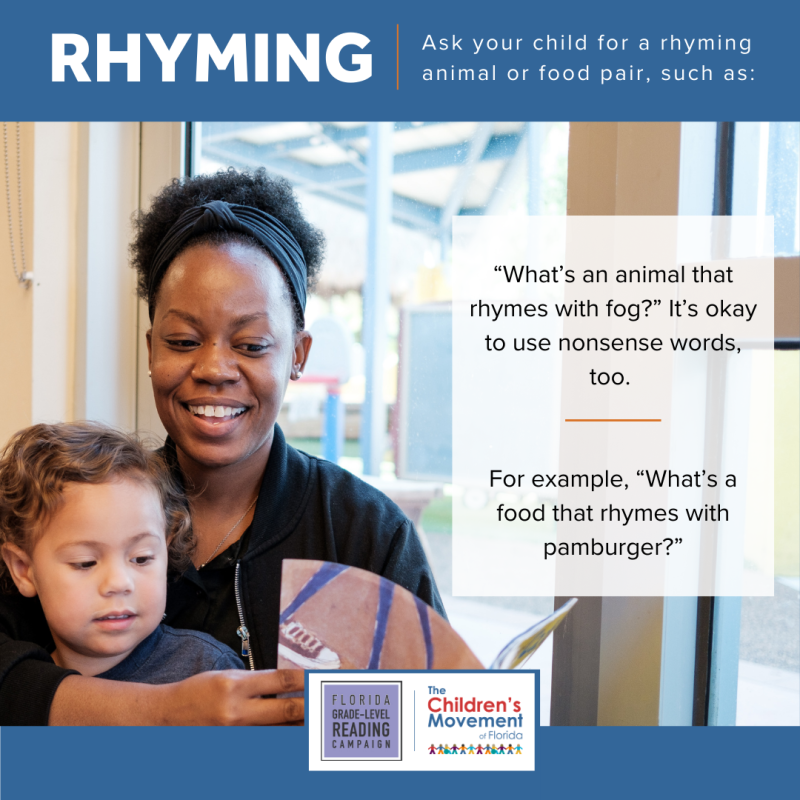
Rhyming
There is more to teaching your child to read than helping them learn the alphabet. Playing rhyming games and singing rhyming songs gets children to pay attention to sounds--a great pre-reading skill!
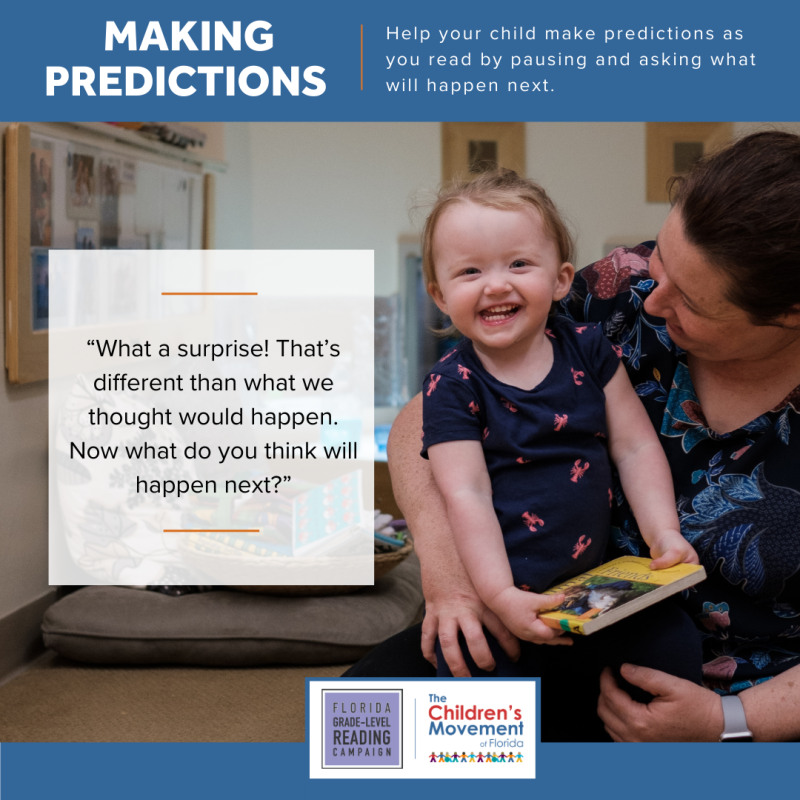
Making Predictions
When children make predictions, they put together what they already know about the story and guess what will happen next.
Some example questions:
- What do you think will happen next? Why?
- What will the character do now?
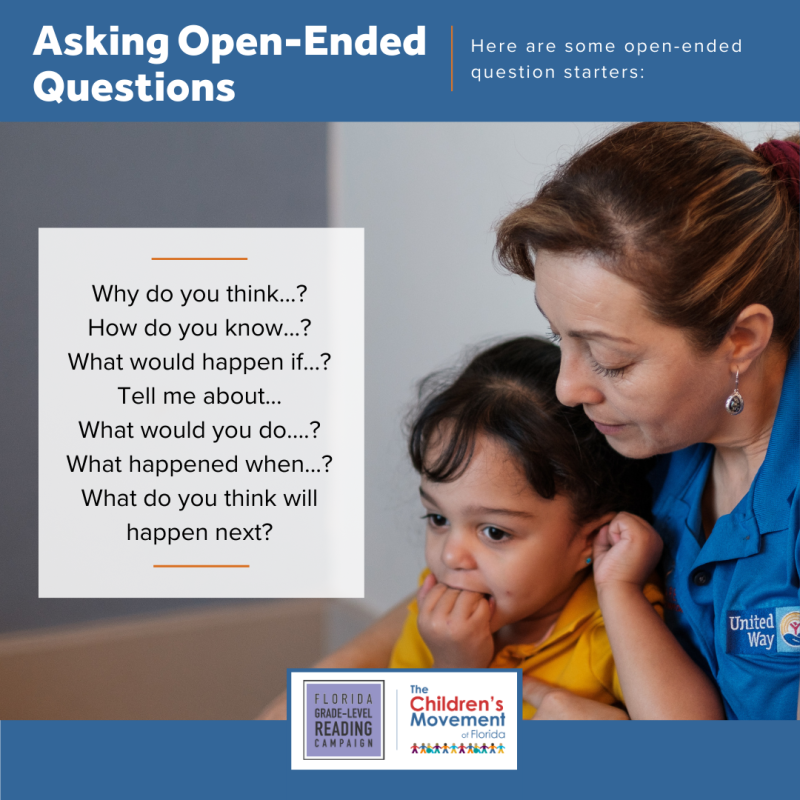
Asking Open-Ended Questions
Encourage your LO’s thinking skills by asking them open-ended questions during a read aloud.
- It encourages children to think more deeply about the book.
- It keeps children interested by giving them a reason to engage with the book.
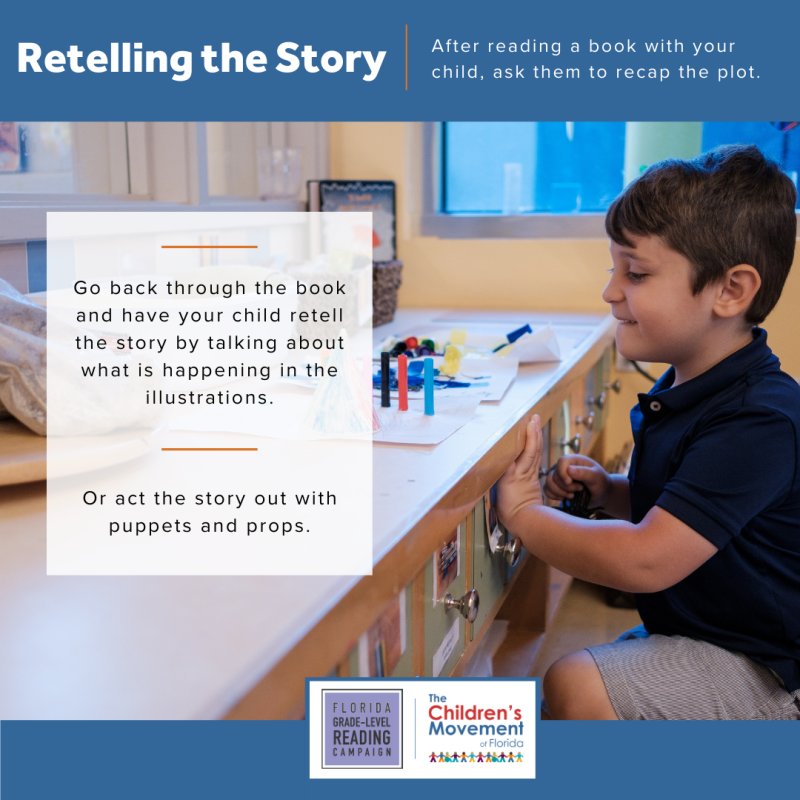
Retelling the Story
After you finish reading a book with your child, ask them to tell you what happened in the story in their own words.
- Allow time for them to think and freely ask questions that can guide them along.
- Use props to retell.
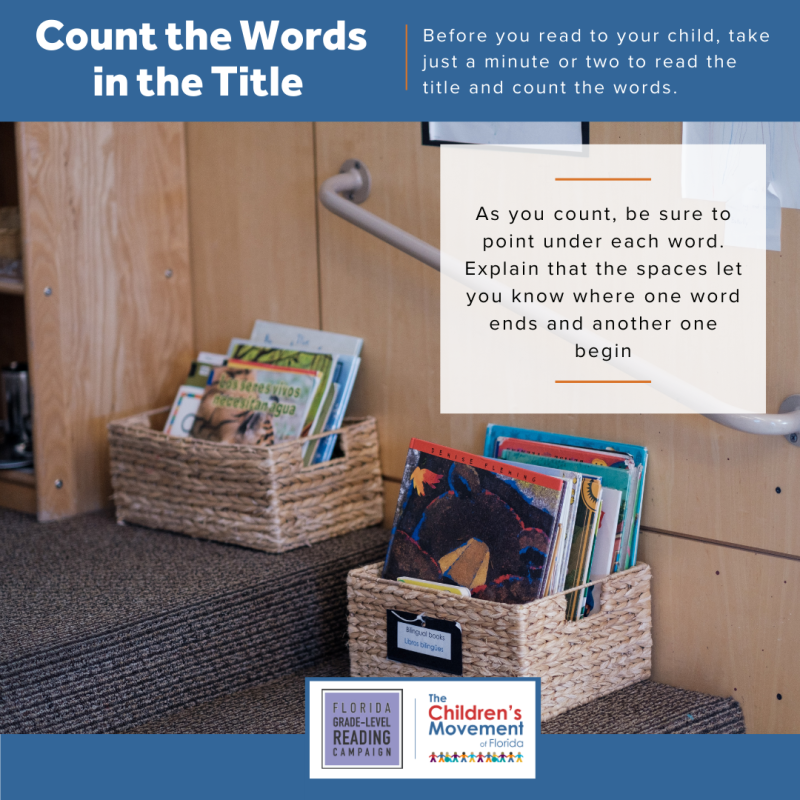
Count the Words in the Title
It may seem obvious to us, but children need to learn that individual words are separated by spaces.
- Challenge your child to find the longest or the shortest words in the title.
- Read the title backwards, pointing at each word.

Use Clapping to Teach Syllables
Clapping out syllables helps your child notice the sounds in each part of a word. They will later use their understanding to spell words.
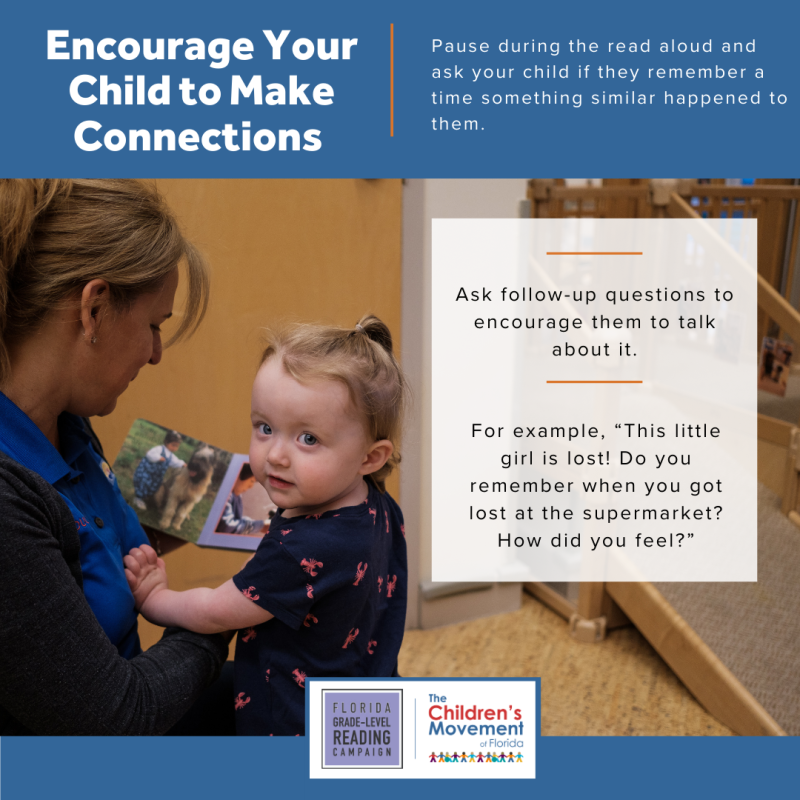
Encourage Your Child to Make Connections
When children connect what they hear in a book to their lives, they make connections that show they are listening and thinking. Children can make different types of text connections:
- Text-to-self
- Text-to-world
- Text-to-text
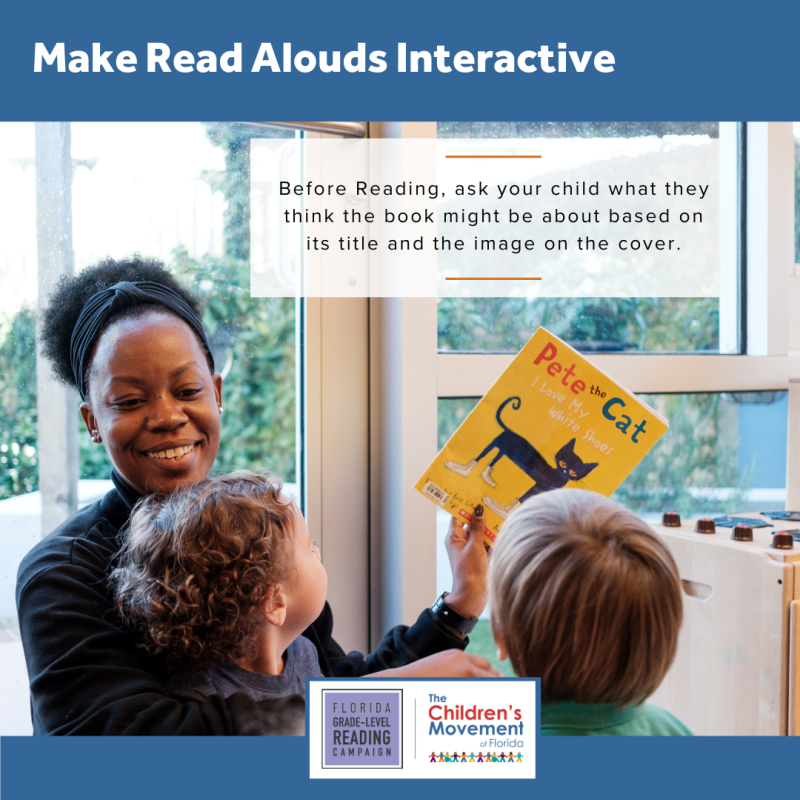
Make Read Alouds Interactive
During an interactive read aloud children are encouraged to relate to a book by discussing the reading.
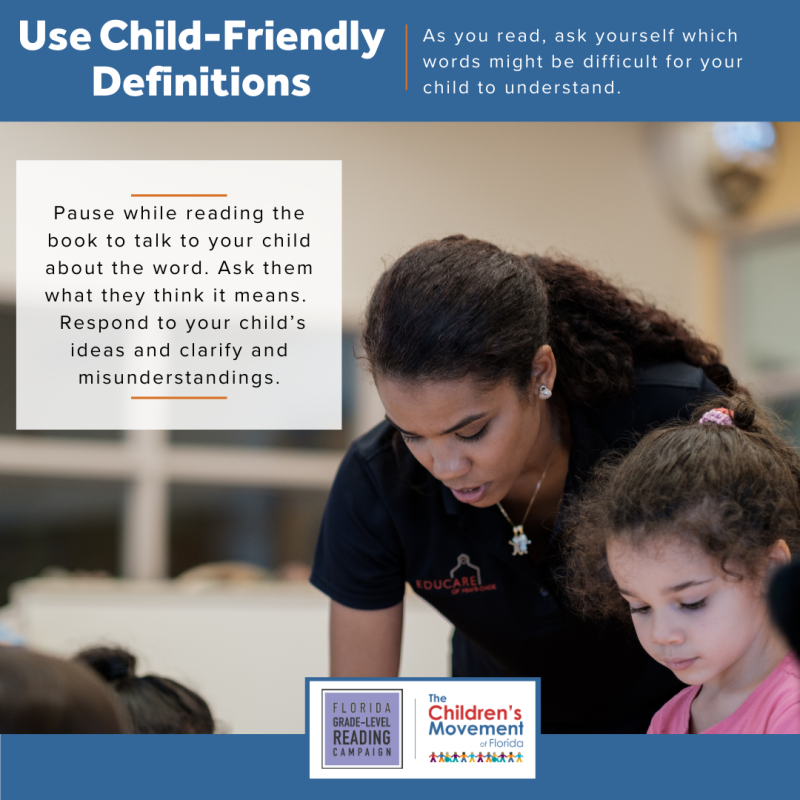
Use Child-Friendly Definitions
One way to help your child develop a rich vocabulary is by using child-friendly definitions to explain unfamiliar words.
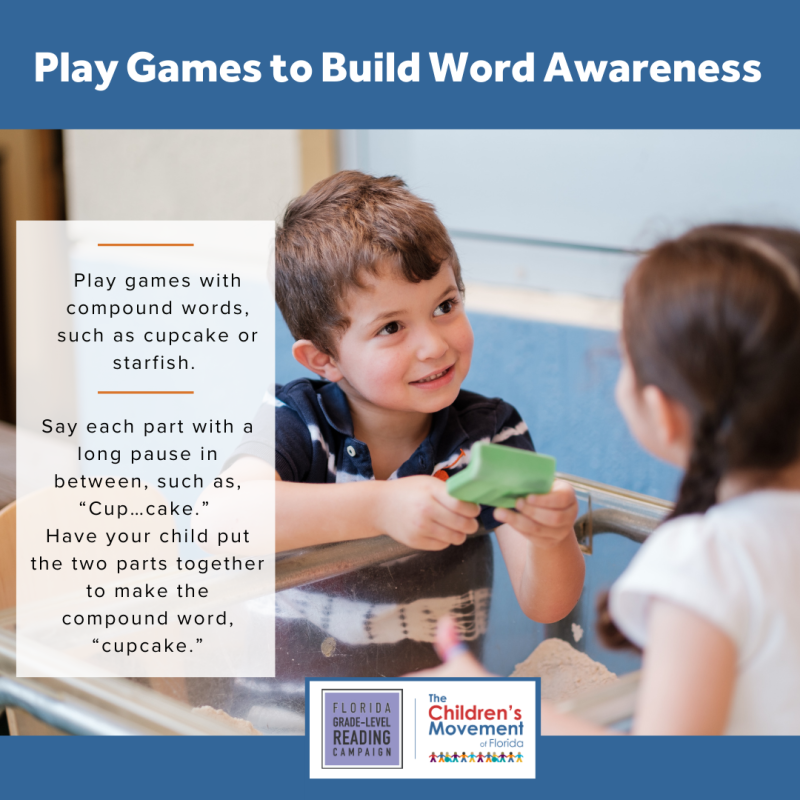
Play Games to Build Word Awareness
Children with good phonological awareness skills develop into better readers.
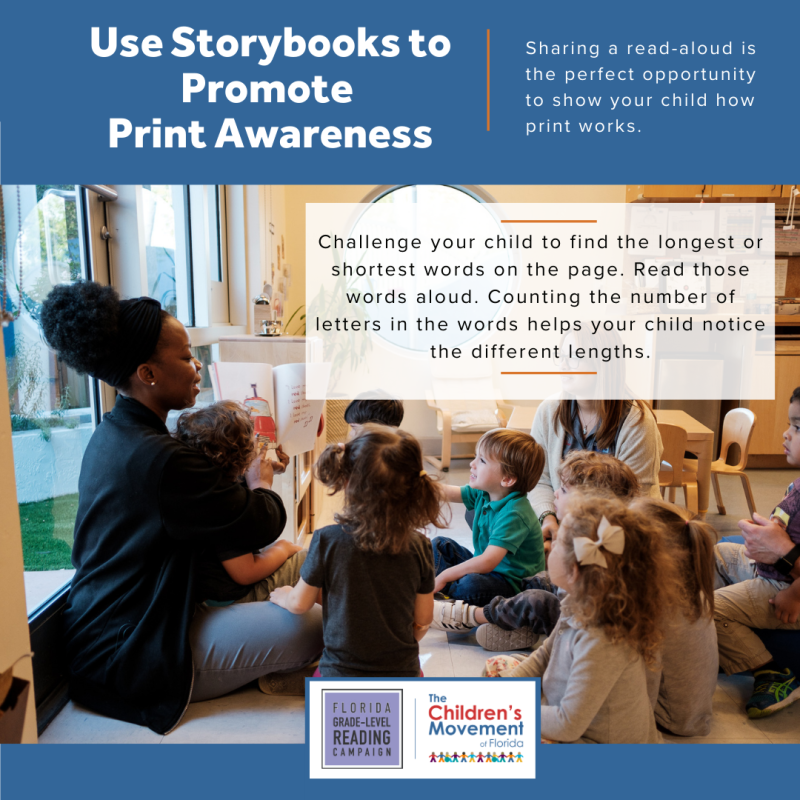
Use Storybooks to Promote Print Awareness
Understanding that printed words carry meaning gives children a genuine purpose to read: They want to understand that printed message!
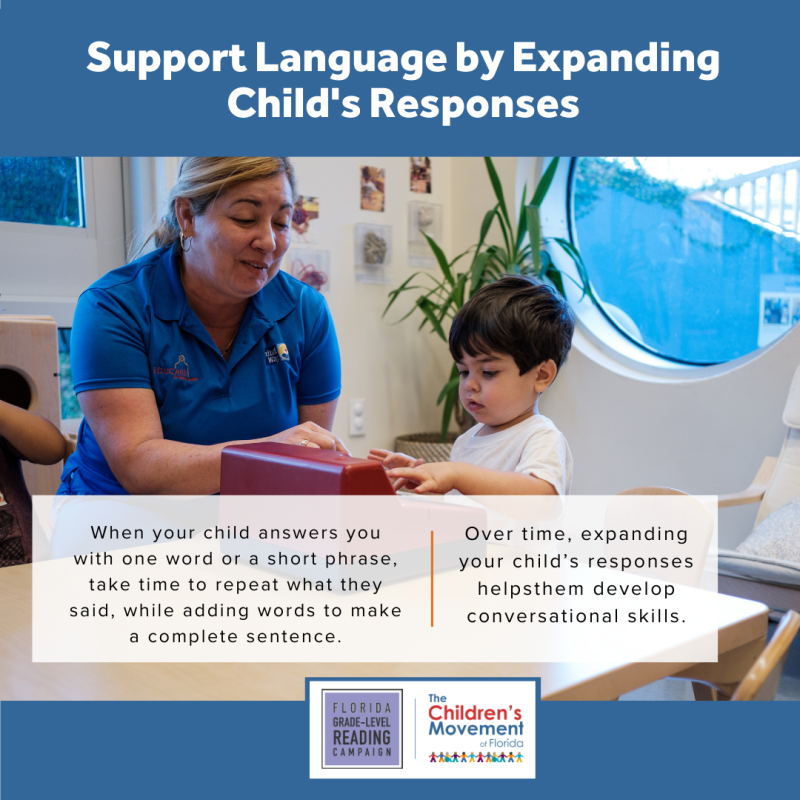
Support Language by Expanding Child's Responses
When you expand on your child’s responses, you accept their answer as correct and add a little more to make it a complete thought or sentence.
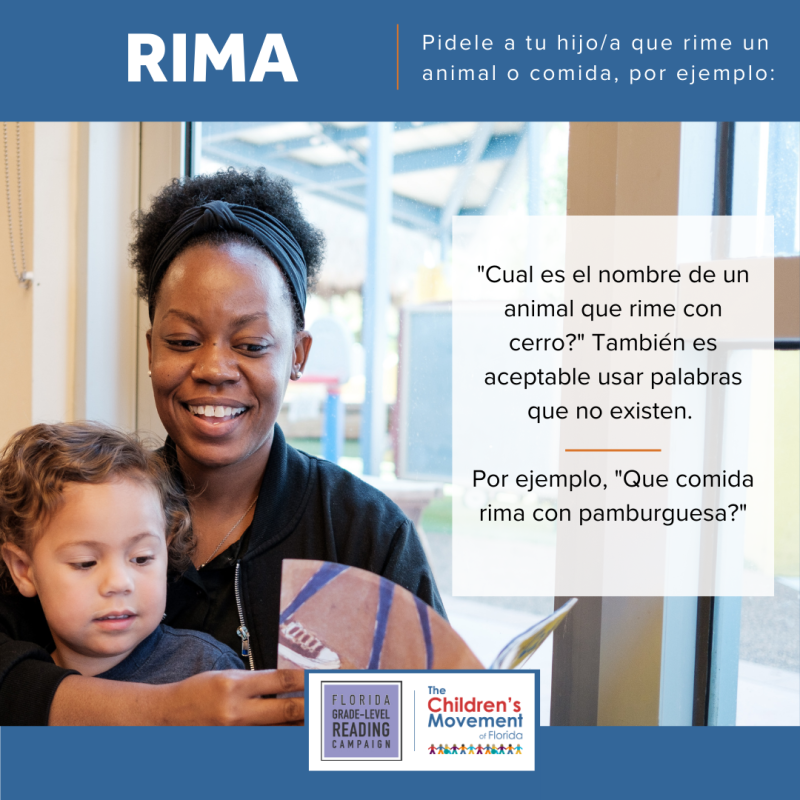
Rima
Enseñarle a tu hijo a leer va mucho más allá de ayudarles a aprenderse el abecedario. Jugar con rimas y cantar canciones que riman hace que tus hijos le pongan mas atención a los sonidos!
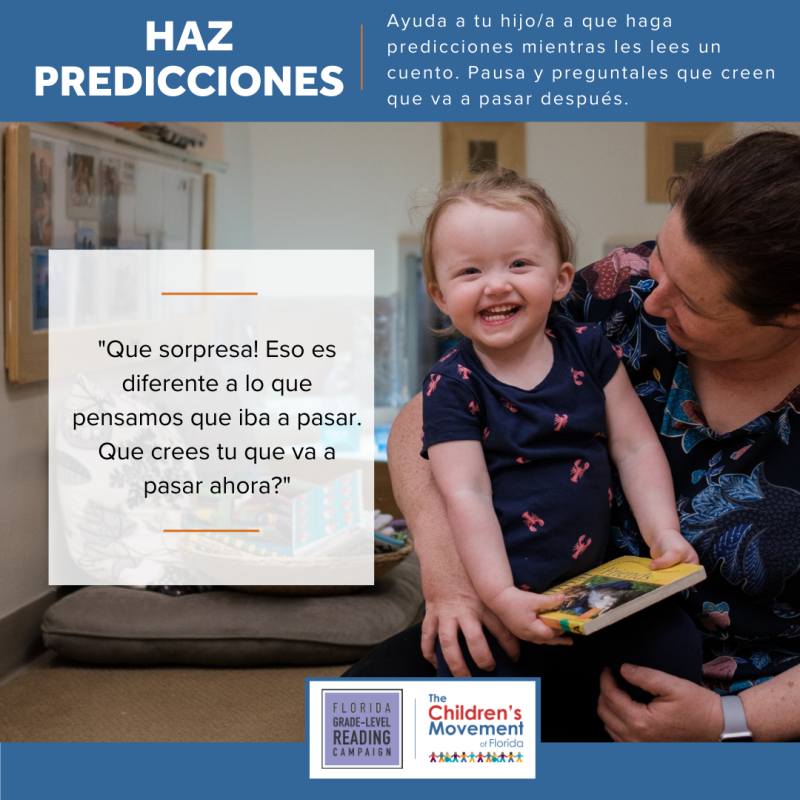
Haz Predicciones
Cuando los niños hacen predicciones, juntan todo lo que ya saben de la historia y adivinan lo que pasará.
Algunos ejemplos de preguntas:
- Que crees que va a pasar ahora? Por que?
- Que hará este personaje?
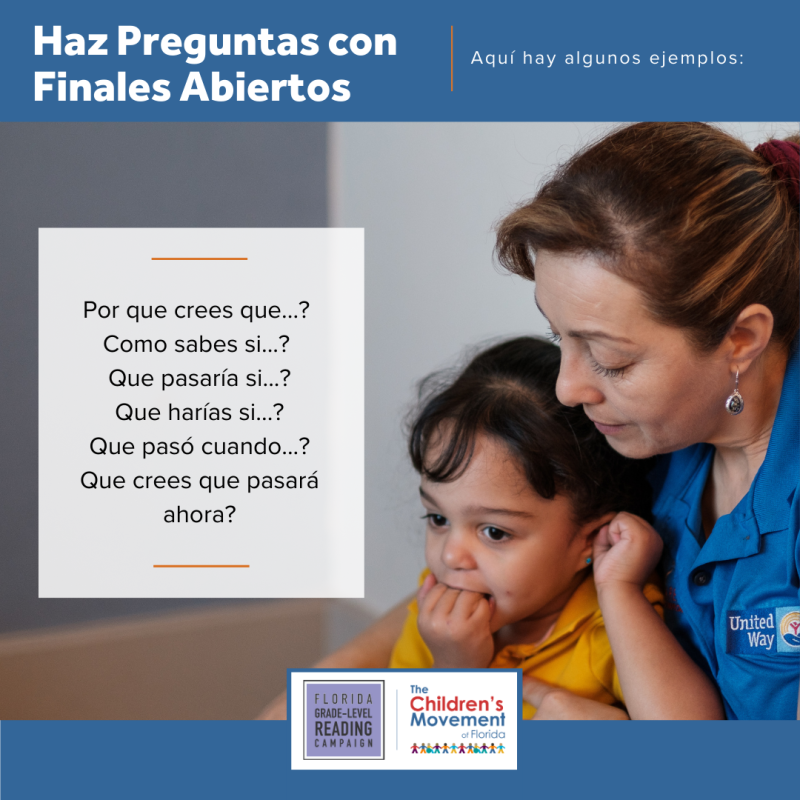
Haz Preguntas Con Finales Abiertos
Apoya el nivel alto de pensamiento en tus hijos con hacerles preguntas de finales abiertos mientras les lees.
Ayuda a los niños a pensar mas profundamente de la historia.
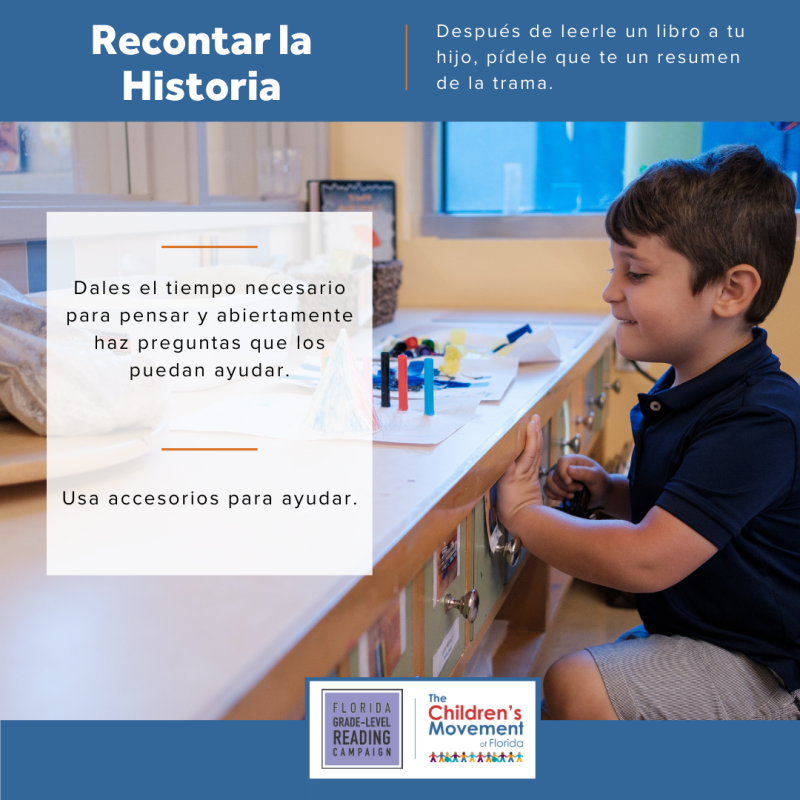
Recontar la Historia
Después de leer un libro con tu hijo, pidele que te cuente que sucedió en la historia con sus propias palabras.
- Dales el tiempo necesario para pensar y abiertamente haz preguntas que los puedan ayudar.
- Usa acesorios para ayudar.
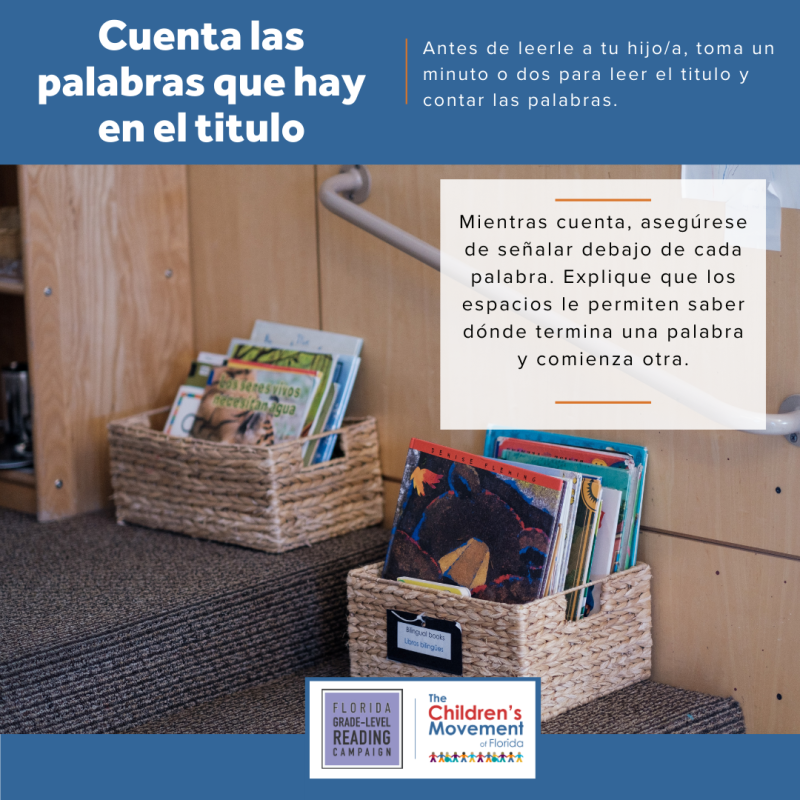
Cuente el Numero de Palabras
Los niños necesitan comprender que hay espacios entre las palabras.
- Estimule a su hijo a ir más allá, y pídale que encuentre las palabras más largas o más cortas en el título.
- Lea el título al revés y vaya señalando cada palabra mientras lee.

Enfatice las Silabas Mediante Palmadas
Aplaudir las sílabas ayuda a su hijo a notar los sonidos en cada parte de una palabra. Más tarde usarán su comprensión para deletrear palabras.
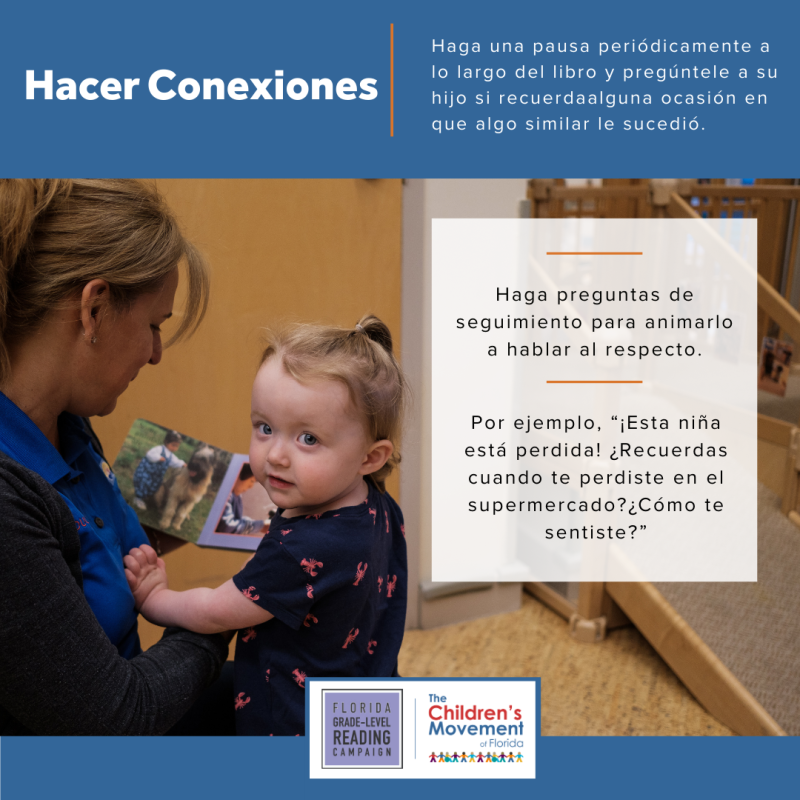
Hacer Conexiones
Cuando los niños conectan lo que escuchan en un libro con sus vidas, hacen conexiones que muestran que están escuchando y pensando. Los niños pueden hacer diferentes tipos de conexiones de texto:
- Texto a uno mismo
- Texto a mundo
- Texto a texto

Lectura en Voz Alta Interactiva
Durante una lectura interactiva en voz alta, los niños se relacionan con el libro a través de la escucha y la participación en discusiones sobre la lectura.
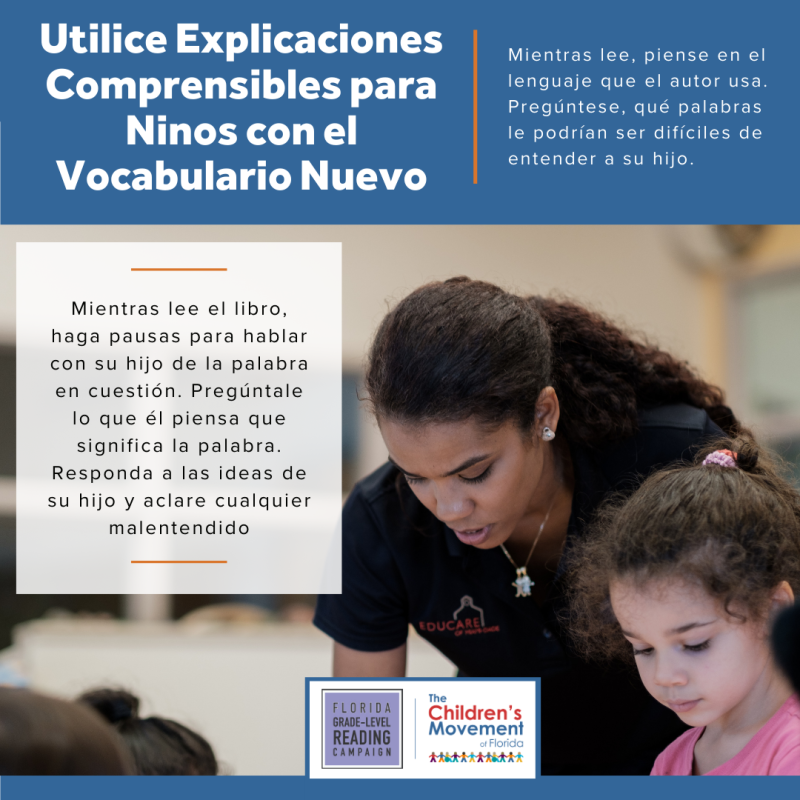
Utilice Explicaciones Comprensibles para Ninos con el Vocabulario Nuevo
Una forma de ayudar a su hijo a desarrollar un vocabulario rico es mediante el uso de definiciones adecuadas para los niños para explicar palabras desconocidas.
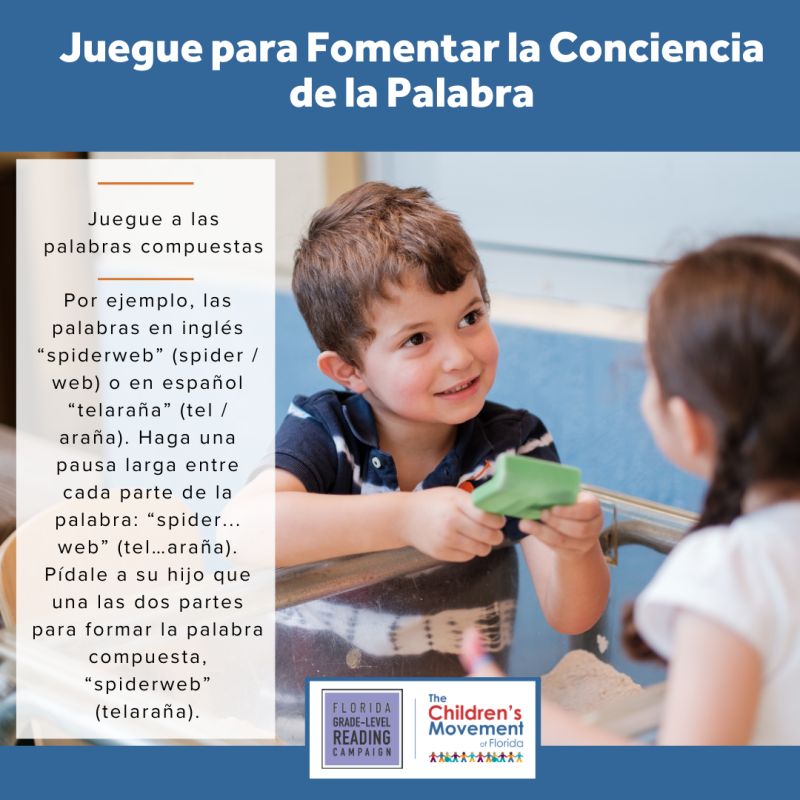
Juegue para Fomentar la conciencia de la Palabra
Los niños con buenas habilidades de conciencia fonológica se convierten en mejores lectores.
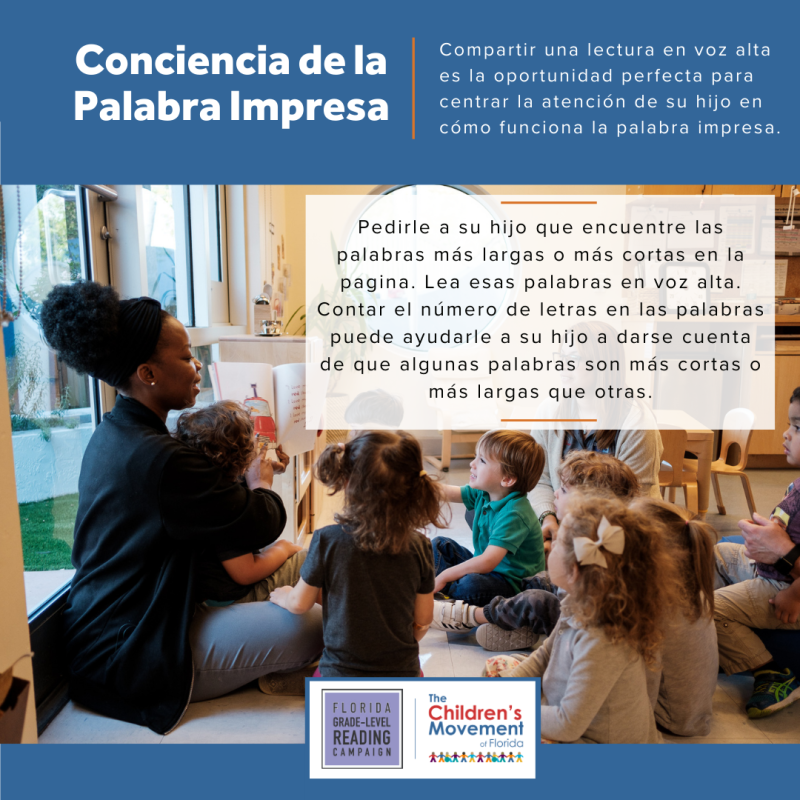
Conciencia de La Palabra Impresa
Comprender que las palabras impresas tienen significado les da a los niños un propósito genuino para leer: ¡quieren entender ese mensaje impreso!
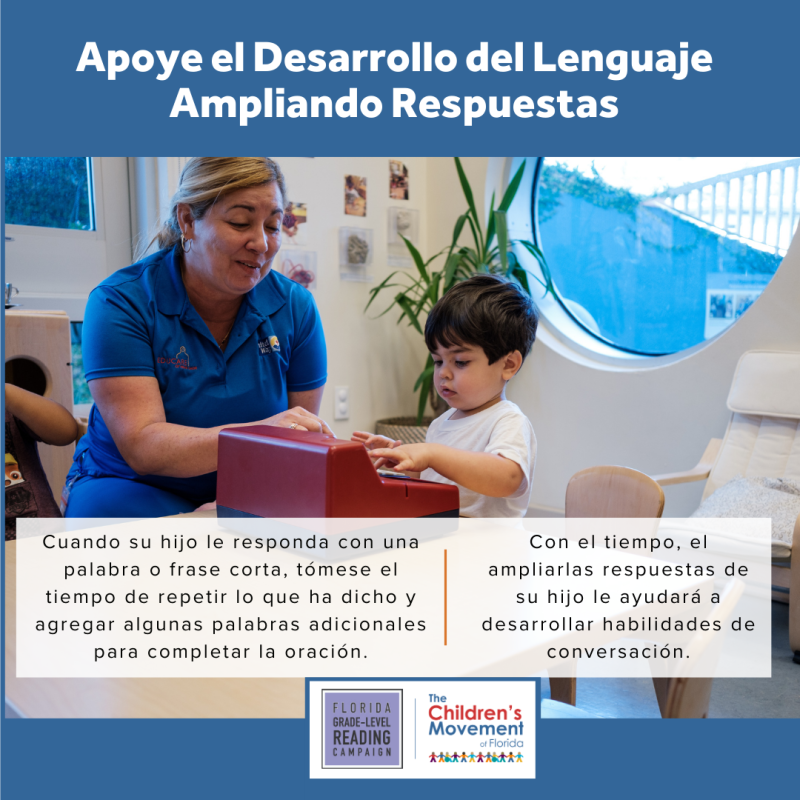
Apoye el Desarrollo del Lenguaje Ampliando Respuestas
Cuando amplía las respuestas de su hijo, usted acepta su respuesta como correcta y agrega un poco más para que se convierta en un pensamiento o frase completa.